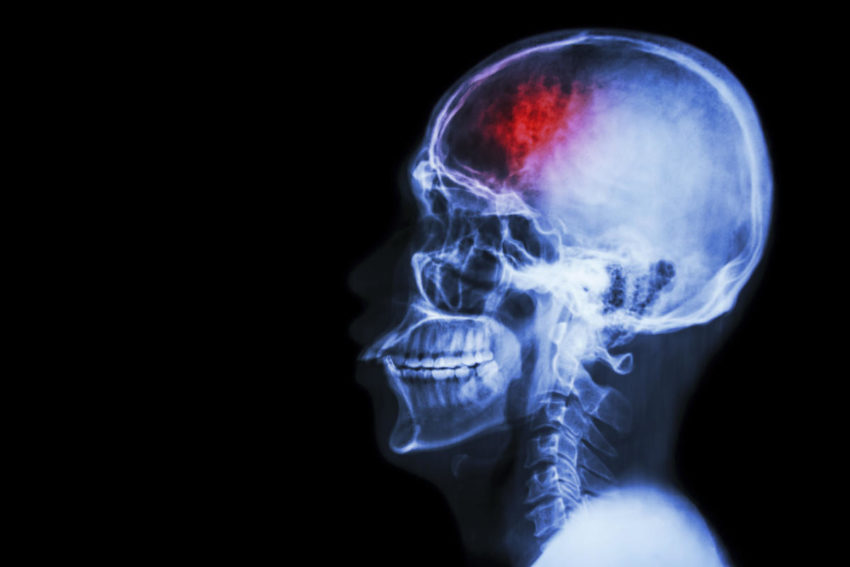“Stent-retrieval” technology helps patients with the worst strokes to regain function, and this is available right here in San Antonio, thanks to UT Medicine and its clinical partners.
The problem
Each year 800,000 people in the U.S. have a stroke. About 85 percent of the time, the cause is a clot that blocks an artery and restricts blood flow to the brain. This is called an ischemic stroke. The blocked vessel can no longer carry oxygen-rich blood to the brain. (Ischemia is lack of oxygen.) Because brain tissue begins to die, opening the artery quickly is essential.
“Intravenous tPA, the clot-busting medication that we’ve used for 20 years to open blocked blood vessels, often does not help patients whose largest vessels are blocked,” neurosurgeon Jeremiah Johnson, M.D., of UT Medicine, said. He is assistant professor in the Department of Neurosurgery at the UT Health Science Center San Antonio.
“In addition to giving intravenous tPA to these patients, we are now doing emergency interventional procedures to open a blocked brain vessel, save brain tissue and successfully preserve their quality of life,” Dr. Johnson said.
The solution
Devices called “stent retrievers” are used to extract clots from stroke patients with large-vessel occlusions. Stent retrievers, approximately the width of a coffee stir, are attached to a catheter that is threaded from the groin to the brain’s largest vessels.
The stent is used to open a hole through the clot and reestablish blood flow. The stent attaches to the blood clot and is then pulled back down the vessel toward the groin, where it is taken out of the body.
“Unlike traditional stents that remain in a blood vessel, this stent is removed,” said neurologist Lee Birnbaum, M.D., M.S., associate professor and director of vascular neurology in the Departments of Neurosurgery and Neurology at UT Health Science Center.
Results are impressive. Without the interventional technique involving the use of the stent retriever, such patients would have received intravenous tPA only. The resulting stroke can cause patients to lose so much function that they require around-the-clock nursing home care, Dr. Johnson said.
Dr. Johnson and his colleagues perform one to two stent-retrieval procedures for acute strokes per week. Generally speaking, about 10 percent of strokes coming to major medical centers are large-vessel occlusions and may benefit from this interventional procedure, he said.
For this intervention to be most effective, patients must be transported to the hospital early. “Amongst those patients, CT imaging shows that a large portion of the brain is at risk of dying from a blood vessel blockage but is not yet dead,” neurosurgeon Ramesh Grandhi, M.D., assistant professor in the Department of Neurosurgery, said. “If circulation resumes quickly enough, the at-risk brain survives.”
Comprehensive care
UT Medicine San Antonio is the clinical practice of the School of Medicine at the Health Science Center. Drs. Johnson, Grandhi and Birnbaum are part of the UT Medicine Comprehensive Stroke and Cerebrovascular Program, which includes four vascular neurologists, three neuro-interventional surgeons, a neuro-intensive care team, rehabilitation medicine specialists and additional neurosurgeons. The program operates at University Hospital and in the Baptist Health System. UT Medicine provides the community a comprehensive team of academic experts who are supported by its clinical partners. The group operates on everything from stroke to brain aneurysms to other conditions.
University Hospital is certified as a Comprehensive Stroke Center by The Joint Commission and the American Heart Association/American Stroke Association — the highest level of certification available. Comprehensive stroke centers are capable of diagnosing and treating the most complex stroke patients with a wider array of technology and procedures.
Baptist Health System holds the DNV-GL Healthcare Comprehensive Stroke Center designation at St. Luke’s Baptist Hospital and the Joint Commission’s Primary Stroke Center Advanced Certification at its four additional hospitals that compose the Brain & Stroke Network.
Both clinical partners, teaming up with the physicians of UT Medicine, provide expert care rapidly and around the clock when people have symptoms of stroke.
“We are the region’s center for cerebrovascular care,” Dr. Birnbaum said. “To take care of one of these stroke patients, you need critical care doctors, because not everyone walks out of the hospital like the patient in our video. Other patients get improvement, but they may not have been brought to care in time and more of the brain died. These patients will be taken care of in an intensive care unit, they will need a stroke neurologist to help manage them both in the hospital and after, and they will require rehabilitation medicine services.”
University Hospital provides the only dedicated neurosurgical intensive care unit in the region.
“We have the gamut of specialists and significant experience with the newest technologies to help the people of San Antonio and South Texas lead normal lives,” Dr. Grandhi said.
For residents of Bexar and surrounding counties, UT Medicine and its hospital partners are the nearest practice where advanced care utilizing stent retrievers is available.


